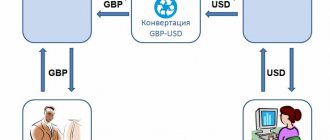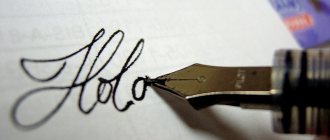Acquiring services are used by businessmen who accept payments by plastic cards. Acquiring transactions differ from cash payments: payment from the buyer does not arrive at the seller’s cash desk immediately and is subject to a commission. Therefore, tax and accounting accounting for acquiring raises questions. We will answer them.
Acquiring and its types
Acquiring accounting
- The proceeds are credited to the account on the day of payment
- Revenue is credited to the account later
- When to recognize revenue
Accounting for the return of goods paid for using acquiring
Tax accounting of acquiring
Acquiring documents
Acquiring and its types
Acquiring is a banking service that allows businessmen to receive revenue from payment cards. If the card is linked to a smartphone or smart watch with an NFC module, then the buyer can pay from the gadget, and they can also make the payment via the Internet - all this is also acquiring.
There are several types of acquiring:
1. Merchant - the buyer purchases a product or receives a service and pays with a card through a terminal located at the retail outlet.
2. Mobile - similar to a trading one, but the terminal is not installed permanently. It is carried by the courier delivering the goods or the driver of the vehicle. To communicate with the bank, the terminal is connected to a mobile phone or tablet.
3. Internet acquiring - an option for purchases in online stores and remote purchase of services (for example, air tickets). In this case, the card does not interact directly with the terminal. The buyer selects the desired product or service, and then enters his card details and PIN code in a special section on the website
Acquiring differs in the time at which money is credited to the seller’s current account.
1. Deferred enrollment. This option is used most often. It is inconvenient for a credit institution to process many small transactions at the time of their completion. Therefore, banks usually include in contracts provisions for the reimbursement of funds for acquiring transactions in 1-3 business days.
2. Enrollment “day to day”. Some banks, in order to attract customers, offer them money to be credited to their account on the day the buyer pays. This option is often used by credit institutions that specialize in working with small businesses. This is convenient when receiving trading revenue on weekends or during long holidays
The peculiarity of acquiring is that the receipt of money from the buyer to the seller’s account does not occur instantly, but after 1–3 business days. There is also a commission for the provision of acquiring services, which the bank withholds from each transaction. These are the main features that affect accounting and tax accounting.
Acquiring accounting
The main transactions for acquiring in retail trade, services or when paying via the Internet will be the same. The reflection of acquiring in accounting depends only on the order in which funds are credited.
The proceeds are credited to the account on the day of payment
If the bank immediately transfers funds based on the results of the acquiring transaction, the transactions will be as follows.
| Wiring | The meaning of the operation |
| DT 62 - KT 90 | Revenue accrued for sales |
| DT 51 - KT 62 | Money were transferred to the account |
| DT 90.3 - KT 68.2 | VAT is charged if the seller pays this tax |
| DT 91 - KT 51 | Bank commission for acquiring services is included in other expenses |
Preparation of accounting entries for business transactions
DOUBLE ENTRY METHOD
Preparation of accounting entries for business transactions
| Item no. | Contents of a business transaction | Corresponding accounts | Active, Passive | +, — | Debit, Credit | Accounting entry |
| 1. | A short-term bank loan was credited to the current account - 850 thousand rubles. | 51-current account 66-short-term loans and borrowings | A P | + + | Dt Kt | Dt 51 Kt 66 850 |
| 2. | Cash received from the current account to the cash desk - 900 thousand rubles. | |||||
| 3. | Staff salaries were issued from the cash register - 870 thousand rubles. | |||||
| 4. | Personal income tax is withheld from staff salaries. persons 130 thousand rubles | |||||
| 5. | Received from suppliers: Materials – 100 thousand rubles VAT – 18 thousand rubles. | |||||
| 6. | Credited to the current account: To pay off customer debt – 250 thousand rubles. Long-term bank loan – 1000 thousand rubles. |
№ 15
ACCOUNTS AND DOUBLE ENTRY
Exercise
- Prepare the organization's balance sheet as of March 31, 20__.
- In the journal of registration of business transactions, compile and record accounting entries, determining the missing amounts.
- Open accounting accounts, record opening balances in them, post transactions among accounts, calculate debit and credit turnover for the month and display ending balances
- Prepare a balance sheet as of April 30, 20__.
Initial data
1. Account balances as of March 31, 200_
| Account number and name | Amount (RUB) |
| 10 "Materials" | |
| 60 “Settlements with suppliers and contractors” (accounts payable) | |
| 51 “Current account” | |
| 50 "Cashier" | |
| 70 “Settlements with employees for wages” | |
| 43 “Finished products” | |
| 80 “Authorized capital” | |
| 71 “Settlements with accountable persons” (accounts receivable) | |
| 99 “Profits and losses” (profits) | |
| 01 "Fixed assets" |
2. Business transactions for the month
Business transaction log
| Item no. | Document and summary of the operation | Corresponding accounts | Amount (RUB) |
| Debit | Credit | private | general |
| 1. | Warehouse invoices and receipt orders. Materials received from suppliers were credited to the warehouse | ||
| Current account statement (ACS). Transferred to pay suppliers' bills | |||
| 3. | Limit fence cards . Materials were released to the main production for the manufacture of products | ||
| 4. | Payslip . Wages accrued to workers of the main production for the manufacture of products | ||
| 5. | Warehouse receipt order Materials unused in production were returned to the warehouse . | ||
| 6. | Advance report. Materials purchased by the supply agent using accountable amounts | ||
| 7. | Accounting Help . Unreturned balance of accountable amounts is withheld from the supply agent's salary | ? | |
| 8. | VRS, cash receipt order. Received at the cash desk: a) for payment of salaries b) for travel expenses | ||
| 9. | Expense cash orders. Issued: a) staff salaries b) for reporting to the director for travel expenses | ||
| HRV. The excess amount received for travel expenses was deposited into the current account | ? | ||
| 11. | Invoices. Finished products delivered to warehouse from production |
№ 5
ACCOUNTING FOR CASH OPERATIONS
Exercise
Reflect cash flow transactions on accounts. Determine the ending balance for account 50 “Cash” and draw conclusions.
Initial data
1. Cash balance limit is 20,000 rubles
2.
The balance on the “Cashier” account is 500 rubles.
3. Analytical data for account 71 “Settlements with accountable persons”
as of 01.10.200_:
| No. | Last name, I.O. accountable person | Amount (RUB) |
| Debit | Credit | |
| 1. | Ivanov A.N. | |
| 2. | Petrov V.A. | |
| 3. | Sidorov K.S. |
Journal of business transactions for October
| No. p, p | Contents of operation | Amount (RUB) | Accounting entry |
| Debit | Credit | ||
| Received money from the current account: | |||
| a) to pay wages | 300 000 | ||
| b) for business and travel expenses | 50 000 | ||
| Received money for products sold for cash | |||
| We received money from parents for keeping their children in the organization’s kindergarten | |||
| Issued from the cash register: | |||
| a) employee salaries | 280 000 | ||
| b) one-time assistance | 10 000 | ||
| Issued to Ivanov A.N. to compensate for overexpenditure on accountable amounts | |||
| Used accountable amounts written off: | |||
| a) from Petrov V.A. for materials | |||
| b) from Sidorov K.S. for general business expenses | |||
| Introduced by Sidorov K.S. balance of unused imputed amount | ? | ||
| Issued to Borisov I.A. for travel expenses | 45 000 | ||
| Money deposited into a bank account | ? |
№ 6
ACCOUNTING OF OPERATIONS ON A CURRENT ACCOUNT
Exercise
Reflect cash flow transactions on the accounts, identifying missing amounts
Initial data Account balances as of 01.11. 20__
| Account number and name | Amount (RUB) |
| 50 "Cashier" | |
| 51 “Current account” | |
| 60 “Settlements with suppliers and contractors” (accounts payable) | |
| 62 “Settlements with buyers and customers” (accounts receivable) | |
| 68 “Calculations for taxes and fees” (accounts payable) | |
| 69 “Social insurance settlements” (accounts payable) | |
| 70 “Settlements with employees for wages” | |
| 76 “Settlements with various debtors and creditors” (accounts receivable) |
Journal of business transactions for October
| No. | Contents of operation | Amount (RUB) | Accounting entry |
| Debit | Credit | ||
| Revenue for sold products is credited to the current account | |||
| Received to the current account for sold fixed assets | |||
| Suppliers' invoices for materials received from them have been paid | |||
| Advance received from customer | |||
| Received from debtors in repayment of debt | ? | ||
| Incorrectly credited to current account | |||
| Employees' salaries were transferred to personal accounts in Sberbank | |||
| Payments listed: | |||
| a) income tax | |||
| b) insurance contributions to social funds | |||
| The balance of money in the cash register is deposited into the current account | ? | ||
| An erroneously credited amount was debited from the current account | ? | ||
| A letter of credit was opened using our own funds | |||
| The balance of the unused letter of credit was returned to the current account | |||
| A short-term bank loan has been credited to the current account |
№ 7
ACCOUNTING SETTLEMENTS
Task 7.1.
Open accounting accounts, reflect transactions on the accounts, and display the ending balances.
Initial data:
1. Account balances:
| From the buyer | From the supplier | ||
| Account number | Amount (thousand rubles) | Account number | Amount (thousand rubles) |
For reference: the contract price of the supplier’s products is 160 thousand rubles excluding VAT
Business transactions for the month
Business transaction log
| № | Contents of operation | Corresponding accounts | Amount (thousand rubles) |
| Debit | Credit | ||
| 1. AT THE BUYER | |||
| 1. | An advance was issued for the supply of materials | ||
| 2. | VAT materials received from supplier | ||
| 3. | Transferred to the supplier as final payment | ||
| 4. | |||
| 2. AT THE SUPPLIER | |||
| 1. | An advance was received from the buyer for the supply of products | ||
| 2. | Products were shipped to the buyer at the agreed price | ||
| 3. | The cost of goods sold is written off | ||
| 4. | Received from the buyer for final payment | ||
| 5. | VAT charged on products sold | ||
| 6. | The financial result from the sale is written off |
Letter of credit payment form
Task 7.2.
Open accounting accounts, reflect transactions on the accounts, and display the ending balances.
Initial data:
1. Account balances:
| From the buyer | From the supplier | ||
| Account number | Amount (thousand rubles) | Account number | Amount (thousand rubles) |
For reference: the contract price of the supplier’s products is 140 thousand rubles excluding VAT
DEPRECIATION
Problem 9.1.
Based on the initial data, reflect in accounting entries business transactions for accounting for fixed assets and recognizing income from their gratuitous receipt during 2012.
Determine the cost of fixed assets at which they will be reflected in the balance sheet as of the end of 2012. When calculating depreciation, use all methods provided for by PBU 6/01.
Initial data:
Business transactions for 2012: 04/18/2012 Omega LLC received production equipment free of charge, the market value of which is 100,000 rubles, the cost at which the equipment was registered with the transferring party is 80,000 rubles. The cost of delivery using our own transport workshop was 10,000 rubles. On April 21, 2012, equipment was accepted for accounting as fixed assets.
The useful life of the resulting equipment is 5 years, the acceleration factor is 2.
Problem 9.2.
CJSC Sigma created a device recognized by the patent office as an invention, used by the company in the production of products for 4 years. The following expenses were incurred during the development process:
— cost of materials 708 thousand rubles, incl. VAT at the established rate
— wages to employees and insurance premiums in the amount of 300 thousand rubles were accrued.
— depreciation was accrued on fixed assets used to create the device in the amount of 280 thousand rubles.
— a fee was paid to the patent office in the amount of 520 thousand rubles.
Reflect transactions on accounts for the reporting period. How much did the invention cost?
Problem 9.3.
Kont LLC uses a device for which a patent has been obtained in the production of products. The initial cost of the intangible asset is 580 thousand rubles.
The device is designed to produce 2900 thousand units. products, depreciation is calculated by writing off the cost in proportion to the volume of production.
In January – March 2012, 150 thousand units were manufactured. finished products. In accordance with the accounting policy, depreciation is calculated using the method of reducing the original cost.
Reflect accounting transactions on the accounts. What is the depreciation amount per month?
№ 10
Determine the content of operations
| No. | Corresponding accounts | Document and contents of the transaction |
| Debit | Credit |
№ 11
Exercise
1. Open accounts to record the process of materials procurement
2. Reflect on the accounts the transactions for their acquisition
3. Calculate the actual procurement cost of materials
Initial data
Materials account balances:
-cost of materials at discount prices (account 10) – 10,400 rubles
- deviation of the actual cost of materials from accounting prices (account 16
(debit balance)) - +180 rubles
Account balance 51 “Current account” - 10,000 rubles
Execution order
1. Based on the data from the business transactions log, fill out the table for calculating the average % and the amount of deviations of the actual cost from the book price
2. Determine accounting entries in the journal of business transactions
COST ACCOUNTING
Open production cost accounts:
1. 20 “Main production”, 25 “General production expenses”, 26 “General business expenses
2. To account 20 open sub-accounts for product types 20-A and 20-B
3. Reflect transactions on accounts in the journal of business transactions
4. Calculate direct costs on accounts 20-A and 20-B (by debit)
5. Calculate costs on accounts 25 and 26 (debit turnover)
6. Distribute the amount of costs on account 25 in proportion to direct costs by type of product (i.e., the amounts in the debit of accounts 20-A and 20-B (clause 4)
7. Determine the cost of products released from production, if the final balance on subaccount 20-A is CU 3800, on subaccount 20-B is CU 2600.
8. Account balances at the beginning of the month: account 10 – 14500 CU, account 16 – 1740 CU.
BUSINESS TRANSACTIONS JOURNAL
| Contents of operation | Amount (CU) | Accounting entry |
| Debit | Credit | |
| Balance on the account “Main production” | 20-A | |
| 20-B | ||
| 1. Materials were sold at accounting prices for: | ||
| A) production of product A | ||
| B) production of products B | ||
| C) maintenance of equipment in the main workshops | ||
| D) equipment repair | ||
| D) general economic needs | ||
| 2. Deviations of actual costs from accounting prices (12%) related to materials sold to: | ||
| A) production of product A | ||
| B) production of products B | ||
| C) maintenance of equipment in the main workshops | ||
| D) equipment repair | ||
| D) general economic needs | ||
| 3. Salary accrued | ||
| A) workers for the manufacture of product A | ||
| B) workers for the manufacture of products B | ||
| B) workers engaged in servicing equipment | ||
| D) workers for equipment repairs | ||
| D) administration of the organization | ||
| 4. Insurance contributions to social funds have been calculated (deductions have been made to social funds) 30% of the accrued wages | ||
| A) | ||
| B) | ||
| IN) | ||
| G) | ||
| D) |
| 5. Depreciation accrued: |
| A) production equipment |
| B) workshop buildings |
| B) office buildings |
| 6. Accepted energy sales invoice for consumed energy: |
| A) the main workshop for the production of products A |
| B) the main workshop for the production of products B |
| C) the main workshop for lighting and other production needs |
| D) administrative services |
| D) VAT |
| 7. At the end of the month, general production expenses are written off as expenses: |
| A) for the manufacture of products A |
| B) for the manufacture of products B |
| 8. Finished products are released from production |
| Including: products A |
| Product B |
| Remaining WIP product A |
| Remaining WIP product B |
Calculation of the share of overhead costs (OPR)
| Types of products | Subaccounts | Direct costs | Distribution coefficient | ODA |
| A | 20-A | |||
| B | 20-B | |||
| Total | X | (100%) |
№ 13
LABOR AND SALARY ACCOUNTING
Problem 13.1
Exercise
Reflect on the accounts transactions for the calculation and payment of wages
Initial data
The organization employs 100 people. In total, all employees have 100 children.
INITIAL DATA
1. Account balances as of December 1, 20__ (RUB):
Current account - 1000
Authorized capital – 1000
2. Business transactions for December:
| № | Business transactions | Amount (RUB) | Buh. wiring |
| The supplier's invoice for received materials has been accepted, VAT 18% | |||
| The invoice of the transport organization for the delivery of materials has been accepted. VAT 18% | |||
| Materials released into production | |||
| Salary accrued for production of products | |||
| Insurance contributions to social funds are calculated at 30% | |||
| Finished products released from production: - standard cost - actual cost | |||
| Finished products were shipped to customers (at the agreed price) | 240 +18% | ||
| Accepted invoice for packaging used for shipment VAT 18% | |||
| Transportation costs for the delivery of finished products were paid from the current account VAT 18% | |||
| 9a | |||
| The standard cost of shipped products is written off | |||
| Deviations of actual production costs from standard costs are written off | |||
| Selling expenses are written off | |||
| VAT charged on products sold | |||
| The financial result from the sale is written off | |||
| Revenue received for products sold |
DOUBLE ENTRY METHOD
Preparation of accounting entries for business transactions
| Item no. | Contents of a business transaction | Corresponding accounts | Active, Passive | +, — | Debit, Credit | Accounting entry |
| 1. | A short-term bank loan was credited to the current account - 850 thousand rubles. | 51-current account 66-short-term loans and borrowings | A P | + + | Dt Kt | Dt 51 Kt 66 850 |
| 2. | Cash received from the current account to the cash desk - 900 thousand rubles. | |||||
| 3. | Staff salaries were issued from the cash register - 870 thousand rubles. | |||||
| 4. | Personal income tax is withheld from staff salaries. persons 130 thousand rubles | |||||
| 5. | Received from suppliers: Materials – 100 thousand rubles VAT – 18 thousand rubles. | |||||
| 6. | Credited to the current account: To pay off customer debt – 250 thousand rubles. Long-term bank loan – 1000 thousand rubles. |
№ 15
ACCOUNTS AND DOUBLE ENTRY
Exercise
- Prepare the organization's balance sheet as of March 31, 20__.
- In the journal of registration of business transactions, compile and record accounting entries, determining the missing amounts.
- Open accounting accounts, record opening balances in them, post transactions among accounts, calculate debit and credit turnover for the month and display ending balances
- Prepare a balance sheet as of April 30, 20__.
Initial data
1. Account balances as of March 31, 200_
| Account number and name | Amount (RUB) |
| 10 "Materials" | |
| 60 “Settlements with suppliers and contractors” (accounts payable) | |
| 51 “Current account” | |
| 50 "Cashier" | |
| 70 “Settlements with employees for wages” | |
| 43 “Finished products” | |
| 80 “Authorized capital” | |
| 71 “Settlements with accountable persons” (accounts receivable) | |
| 99 “Profits and losses” (profits) | |
| 01 "Fixed assets" |
2. Business transactions for the month
Business transaction log
| Item no. | Document and summary of the operation | Corresponding accounts | Amount (RUB) |
| Debit | Credit | private | general |
| 1. | Warehouse invoices and receipt orders. Materials received from suppliers were credited to the warehouse | ||
| Current account statement (ACS). Transferred to pay suppliers' bills | |||
| 3. | Limit fence cards . Materials were released to the main production for the manufacture of products | ||
| 4. | Payslip . Wages accrued to workers of the main production for the manufacture of products | ||
| 5. | Warehouse receipt order Materials unused in production were returned to the warehouse . | ||
| 6. | Advance report. Materials purchased by the supply agent using accountable amounts | ||
| 7. | Accounting Help . Unreturned balance of accountable amounts is withheld from the supply agent's salary | ? | |
| 8. | VRS, cash receipt order. Received at the cash desk: a) for payment of salaries b) for travel expenses | ||
| 9. | Expense cash orders. Issued: a) staff salaries b) for reporting to the director for travel expenses | ||
| HRV. The excess amount received for travel expenses was deposited into the current account | ? | ||
| 11. | Invoices. Finished products delivered to warehouse from production |
№ 5
ACCOUNTING FOR CASH OPERATIONS
Exercise
Reflect cash flow transactions on accounts. Determine the ending balance for account 50 “Cash” and draw conclusions.
Initial data
1. Cash balance limit is 20,000 rubles
2.
The balance on the “Cashier” account is 500 rubles.
3. Analytical data for account 71 “Settlements with accountable persons”
as of 01.10.200_:
| No. | Last name, I.O. accountable person | Amount (RUB) |
| Debit | Credit | |
| 1. | Ivanov A.N. | |
| 2. | Petrov V.A. | |
| 3. | Sidorov K.S. |
1
What to do if there is no reciprocity? And now let's come down from heaven to earth. Have you landed? Let's continue the conversation...
What will happen to the Earth if its axis shifts by 6666 km? What will happen to the Earth? - I asked myself...
Conflicts in family life. How can I change this? It is rare that a marriage and relationship exists without conflict and tension. Everyone goes through this...
Live by the rule: IS THERE NOT MUCH THING IN THE WORLD EXISTING? It is no coincidence that I emphasize that the space in your head is limited, but there is a lot of information around, and that your right...
Didn't find what you were looking for? Use Google search on the site:
Revenue is credited to the account later
If the money does not reach the seller’s account immediately, then additional acquiring transactions appear. To do this, use account 57 “Transfers in transit”.
| Wiring | The meaning of the operation |
| DT 62 - KT 90 | Reflected sales revenue |
| DT 57 - KT 62 | Funds are debited from the buyer's card |
| DT 91 - KT 57 | Bank commission for acquiring services is included in other expenses |
| DT 51 - CT 57 | Proceeds are credited to the seller's account minus commission |
In accounting, revenue from the sale of goods or the provision of services must be taken into account in full, even if in fact you receive the amount in your account minus the bank commission. The commission is applied to other expenses of the organization (clause 11 of PBU 10/99).
When to recognize revenue
In any of the options for working with a bank, proceeds from sales must be taken into account on the date of transfer of goods or provision of services to the buyer, regardless of the date of receipt of money in the account. This approach is used with the accrual method, which is used by almost all organizations for accounting.
Small enterprises that keep records using a simplified scheme theoretically have the right to use the cash method in accounting, i.e. recognize revenue when money is received (clause 4 of PBU 9/99). In practice, almost no one does this, since with the cash method it is difficult to adequately assess income, expenses and the structure of the balance sheet.
We will help you choose a trade acquiring partner
Choose a partner
How to record the receipt of revenue into a current account in an invoice
Settlements between organizations, as well as between individual entrepreneurs and legal entities, pass mainly through a current account. If the proceeds from the sale of products, works or services are credited to the organization’s current account, then the following transactions must be made.
| Business transaction | Wiring |
| The organization's products were sold | Debit 62 / Credit 90.1 subaccount “Revenue” |
| VAT charged | Debit 90.3 / Credit 68 |
| Payment for products has been received into the organization's bank account. | Debit 51 / Credit 62 |
Account 62 is called “Settlements with buyers and customers”. This is an account that reflects generalized information about settlements with counterparties.
Account 90 “Sales” is intended to summarize information on income and expenses that are associated with the organization’s normal activities, as well as to determine the financial result for them. This account reflects, in particular, the revenue and cost of the organization. To reflect foreign currency earnings on the account, account 52 “Currency accounts” is used. It is intended to summarize information on the availability and movement of funds in foreign currencies on the organization’s foreign currency accounts opened with credit institutions, both in Russia and abroad.
Accounting for the return of goods paid for using acquiring
If the buyer paid for the goods with a plastic card, then he should also receive money for the returned goods on the card. Cash returns are allowed only for purchases that were paid for in cash (clause 2 of the Directive of the Central Bank of the Russian Federation No. 3073-U).
In accounting, calculations for the return of goods are reflected using reversal, that is, reverse postings. They are highlighted in red.
| Wiring | The meaning of the operation |
| DT 62 - KT 90 | Revenue reversed |
| DT 90.3 - KT 68.2 | VAT reversed |
| DT 62 - CT 57 | The refund application has been submitted to the bank |
| DT 57 - CT 51 | Money returned to buyer |
Upon return, the buyer must receive a full refund of the cost of the product. For the sale, you received payment into your account minus a bank commission, but you will have to compensate for this difference at your own expense. You cannot deduct a commission from the buyer.
There are no grounds for returning the commission in this situation - after all, the acquiring service was provided. However, some banks provide refunds of commissions under certain conditions: for example, if the buyer returns the goods after a short time - 3-5 days.
Basic accounting entries for account 60 with subaccounts
By debit of the account:
| Account Dt | Kt account | Contents of operation |
| 60 | 50.01 | Repayment of debt to the supplier from the cash register |
| 60 | Repayment of debt to the supplier in non-cash form | |
| 60 | Repayment of debt to the supplier in foreign currency | |
| 60 | 55.01 | Write-off of the amount of the used letter of credit for settlements with the supplier |
| 60 | The offset of counter homogeneous claims is reflected | |
| 60 | 66 | Re-registration of a debt to a supplier into a short-term loan |
| 60 | 67 | Re-registration of a debt to a supplier into a long-term loan |
| 60 | 76.02 | Withholding the amount of an admitted claim from funds payable to the supplier |
| 60 | 91.01 | Outstanding accounts payable included in other income due to the expiration of the statute of limitations |
| 60 | 91.01 | Positive exchange rate difference on receivables in foreign currency included in other income |
By account credit:
| Account Dt | Kt account | Contents of operation |
| 60 | Equipment requiring installation has been registered | |
| 08 | 60 | Supplier invoices accepted for payment for acquired non-current assets |
| 10 | 60 | Materials received from suppliers were capitalized |
| 15 | 60 | The purchase price of inventories for which settlement documents were not received from suppliers was taken into account |
| 15 | 60 | Costs associated with stockpiling are taken into account |
| 19 | 60 | VAT on capitalized assets |
| 20 | 60 | The cost of work (services) performed by contractors is taken into account in costs. |
| 60 | General production expenses include the cost of work (services) performed by contractors. | |
| 60 | The cost of work (services) performed by contractors is taken into account as part of general business expenses. | |
| 60 | The cost of contractors’ work is included in the cost of eliminating defects | |
| 41 | 60 | Goods received from suppliers were capitalized |
| 44 | 60 | Inclusion in expenses of the cost of work and services related to the sales process |
| 50 | 60 | Return by the supplier of the excess money paid to him to the organization's cash desk |
| 60 | Return by the supplier of excess funds paid to him to the organization's bank account | |
| 60 | Return by the supplier of excess funds paid to him to the organization’s foreign currency account | |
| 76.02 | 60 | The amount of the claim against the supplier is reflected |
| 91.02 | 60 | Accepted for payment invoices from other organizations for services related to the disposal of other assets |
| 91.02 | 60 | Write-off of accounts receivable that are unrealistic for collection (no reserve was created) |
| 91.02 | 60 | Reflection of negative exchange rate difference on accounts payable in foreign currency |
| 60 | Reflection of shortages upon acceptance of valuables received from the supplier | |
| 97 | 60 | Reflection of debt to suppliers for work performed, for which costs are charged to deferred expenses |
Tax accounting of acquiring
As a result of the acquiring transaction, the businessman receives in his current account an amount less than what the buyer paid, since the bank withheld a commission. But to calculate income tax, VAT or the simplified tax system (USN), the revenue must be taken into account in full.
Example.
Alpha LLC operates at OSNO. According to the acquiring agreement, the bank commission is 1.5%. Revenue per day from cards is 120,000 rubles.
The bank commission will be:
120,000 × 1.5% = 1,800 rubles
Money will be credited to your bank account:
120,000 – 1,800 = 118,200 rubles
Revenue excluding VAT for income tax:
120,000 / 120% × 100% = 100,000 rubles
The costs of paying the acquiring commission reduce the taxable base, both for income tax and for the simplified tax system “Income minus expenses” or Unified Agricultural Tax. It is impossible to deduct VAT from the bank commission, since it is not subject to this tax.
The procedure for recognizing revenue in tax accounting depends on the taxation regime. Under the simplified tax system and unified agricultural tax, income is taken into account only by the cash method, that is, on the date of payment. In this case, it is important to include in the proceeds all funds received from the buyer, otherwise the tax base will be underestimated.
To calculate income tax, the accrual method is usually used - revenue is recognized at the time of accrual, that is, when you transfer the goods or provide the service to the buyer. Small enterprises with revenues of up to 1 million rubles per quarter have the right to calculate income tax using the cash method. But in practice, almost no one does this so that there are no deviations between accounting and tax accounting.
Acquiring documents
When paying by card, the seller is obliged to give the buyer a regular cash receipt and a slip, which is generated by the payment terminal. The slip contains basic payment data: amount, time, card details, terminal number.
An individual buyer can use a slip similar to a cash receipt to confirm the fact of payment (Article 493 of the Civil Code of the Russian Federation). For example, if a dispute arises regarding the return of goods.
For buyers of individual entrepreneurs or legal entities, one slip is not enough to confirm costs.
The slip does not contain all the necessary details that are in the check, for example, the seller’s TIN. Card payments are non-cash payments, so there is no need to include the amounts of acquiring receipts in the cash receipt order. But this revenue should be included in the cashier-operator’s journal. For non-cash receipts, columns 12 and 13 of the journal “Paid according to documents: quantity, amount” are intended.







